DAY-7: INVENTORS – BLACK INNOVATION UNCOVERED
Today, most of us have heard of some early invention presented in our grade-school history books attributed to a particular person, only to find out later that there was an African American left out of the story. This segment focuses on showcasing many of the Black inventors and their inventions that have transformed our nation.
Many of these inventions helped simplify our daily lives, enhancing the process, making our efforts more efficient and effective. In contrast, other innovations proved to be scientifically genius–forging a new path for science and industry to follow.
Black creativity is one of my favorite areas of impact. First, as a creative person, I don’t limit creativity to artistic expression. Next to love, creativity is one of the most powerful attributes of God–the ultimate creator. I learned to see creativity as problem-solving that extends beyond artistic expression. Secondly, our appreciation of Black genius, particularly in America’s formative years, was diminished in the shadow of consistent efforts to marginalize Black people. When you view the showcase today, please take the time to consider the backdrop in which these individuals brought forth such inventions. Many people want to forget all about what Black people went through. But, in doing so, you lose the genuine appreciation of their survival, transformation, and transcendence.
Every step of the way, there were barriers and closed doors. Yet, they pressed on with the spirit of perseverance and determination because that is who they are. Many people took credit for Black inventions but today #LetTheTruthBeTold.
We have chosen to celebrate a select few individuals for their inventions and the impact they have had on our country. Today we honor their genius. We must not let their contributions be forgotten or let others bask in the credit of their achievements. Today let’s change the narrative. #LET THE TRUTH BE TOLD.
MADAME C.J. Walker a profound inventor and process innovator will be showcased in our business are of impact
8 Black Inventors that Made Daily Life Easier
LEWIS LATIMER AND GARRETT A. MORGAN
Most people have heard about famous inventions like the light bulb, the cotton gin and the iPhone. But there are countless other, often overlooked inventions that make our daily lives easier. Among the creative innovators behind these devices are African American inventors. From the traffic light to the ironing board, see a list of products that have sprung from the minds of Black inventors.
Lewis Latimer the Draftsmen and Innovator behind Thomas Edison and Alexander Graham Bell.
“The Real McCoy”
Elijah McCoy was born free in 1844 in Colchester, Ontario, Canada to George and Mildred (Goins) McCoy. At the time, they were fugitive slaves who had escaped from Kentucky to Canada via helpers through the Underground Railroad.[3] George and Mildred arrived in Colchester Township, Essex, Ontario Canada in 1837 via Detroit. Elijah McCoy had 11 siblings. Ten of the children were born in Canada from Alfred (1839) to William (1859). Based on 1860 Tax Assessment Rolls, land deeds of sale, and the 1870 USA Census it can be determined the George McCoy family moved to Ypsilanti, Michigan in 1859–60.
Elijah McCoy was educated in black schools of Colchester Township due to the 1850 Common Schools act which segregated the Upper Canadian schools in 1850. At age 15, in 1859, Elijah McCoy was sent to Edinburgh, Scotland for an apprenticeship and study. After some years, he was certified in Scotland as a mechanical engineer. By the time he returned, the George McCoy family had established themselves on the farm of John and Maryann Starkweather in Ypsilanti. George used his skills as a tobacconist to establish a tobacco and cigar business.
When Elijah McCoy arrived in Michigan, he could find work only as a fireman and oiler at the Michigan Central Railroad. In a home-based machine shop in Ypsilanti, Michigan, McCoy also did more highly skilled work, such as developing improvements and inventions. He invented an automatic lubricator for oiling the steam engines of locomotives and ships, patenting it in 1872 as “Improvement in Lubricators for Steam-Engines” (U.S. Patent 129,843).
DR. PATRICIA BATH AND GEORGE WASHINGTON CARVER
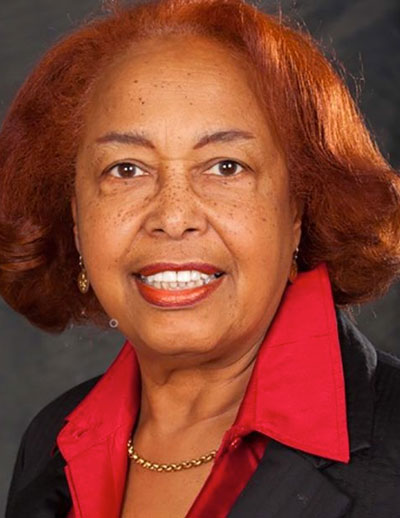
Dr. Patricia Bath 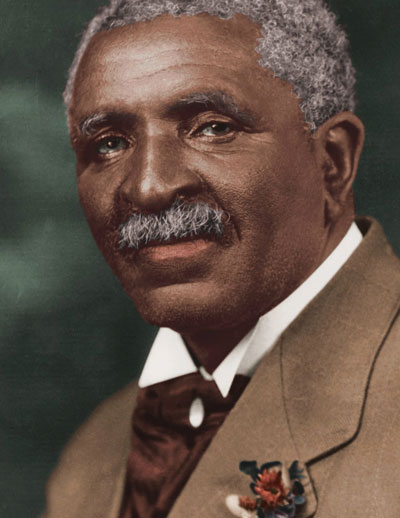
George Washington Carver
Patricia Bath was the first African American to complete a residency in ophthalmology in 1973. Two years later, she became the first female faculty member in the Department of Ophthalmology at UCLA’s Jules Stein Eye Institute. In 1976, Bath co-founded the American Institute for the Prevention of Blindness, which established that “eyesight is a basic human right.” In 1986, Bath invented the Laserphaco Probe, improving treatment for cataract patients. She patented the device in 1988, becoming the first African American female doctor to receive a medical patent.
George Washington Carver was an agricultural scientist and inventor who developed hundreds of products using peanuts (though not peanut butter, as is often claimed), sweet potatoes and soybeans. Born into slavery a year before it was outlawed, Carver left home at a young age to pursue education and would eventually earn a master’s degree in agricultural science from Iowa State University. He would go on to teach and conduct research at Tuskegee University for decades, and soon after his death his childhood home would be named a national monument — the first of its kind to honor an African American.
GRANVILLE WOODS
Known as “Black Edison,” he registered nearly 60 patents in his lifetime, including a telephone transmitter, a trolley wheel and the multiplex telegraph (over which he defeated a lawsuit by Thomas Edison.
BIOGROPHY.COM

Engineer and Inventor Granville T. Woods
Granville T. Woods, born to free African Americans, held various engineering and industrial jobs before establishing a company to develop electrical apparatus. Known as “Black Edison,” he registered nearly 60 patents in his lifetime, including a telephone transmitter, a trolley wheel and the multiplex telegraph (over which he defeated a lawsuit by Thomas Edison.
Born in Columbus, Ohio, on April 23, 1856, Woods received little schooling as a young man and, in his early teens, took up a variety of jobs, including as a railroad engineer in a railroad machine shop, as an engineer on a British ship, in a steel mill, and as a railroad worker. From 1876 to 1878, Woods lived in New York City, taking courses in engineering and electricity — a subject that he realized, early on, held the key to the future.
Back in Ohio in the summer of 1878, Woods was employed for eight months by the Springfield, Jackson and Pomeroy Railroad Company to work at the pumping stations and the shifting of cars in the city of Washington Court House, Ohio. He was then employed by the Dayton and Southeastern Railway Company as an engineer for 13 months.
During this period, while traveling between Washington Court House and Dayton, Woods began to form ideas for what would later be credited as his most important invention: the “inductor telegraph.” He worked in the area until the spring of 1880 and then moved to Cincinnati.
“Contemporary Contributers”
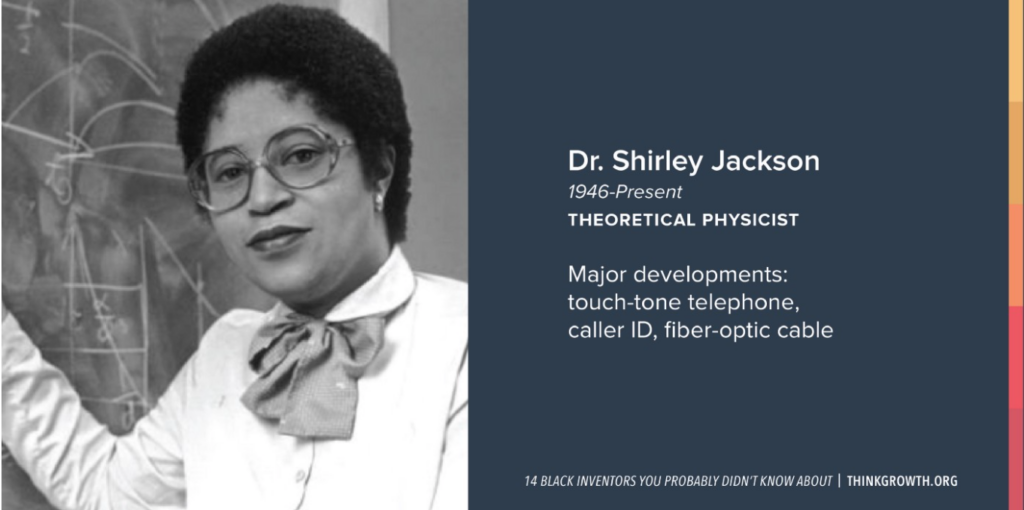
Dr Shirley Jackson is an American physicist who received her Ph.D. from the Massachusetts Institute of Technology in 1973. She was the first African-American woman to earn a doctorate in nuclear physics at MIT. In addition to her lengthy list of academic achievements, she also has an impressive number of inventions under her belt.
Her experiments with theoretical physics paved the way for numerous developments in the telecommunication space including the touch-tone telephone, the portable fax, caller ID, call waiting, and the fiber-optic cable.
Today, Dr. Shirley Jackson is the 18th president of Rensselaer Polytechnic Institute in Troy, New York.
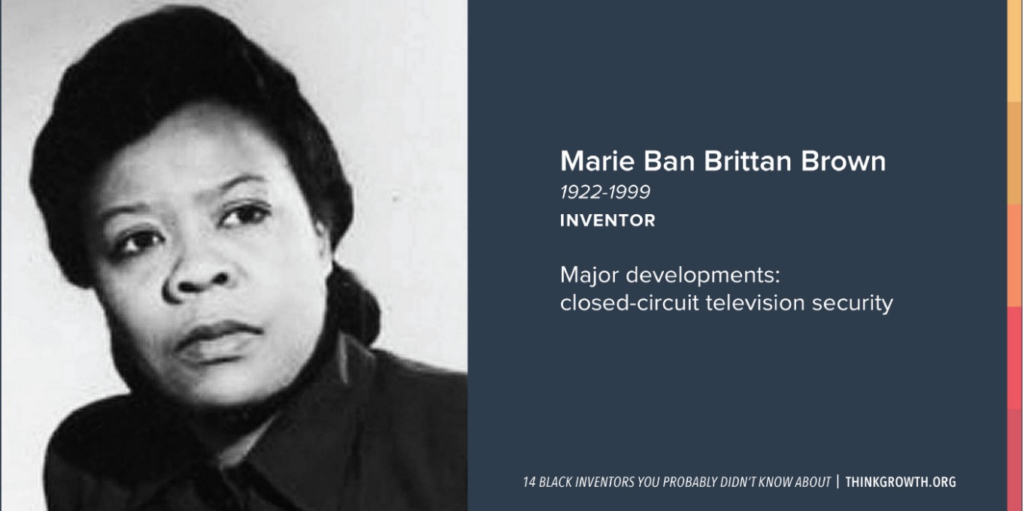
Did you know that the first home security system was invented by a Black nurse? Meet Marie Van Brittan Brown. Although she was a full-time nurse, she recognized the security threats to her home and devised a system that would alert her of strangers at her door and contact relevant authorities as quickly as possible.
Her original invention consisted of peepholes, a camera, monitors, and a two-way microphone. The finishing touch was an alarm button that, when pressed, would immediately contact the police. Her patent laid the groundwork for the modern closed-circuit television system that is widely used for surveillance, home security systems, push-button alarm triggers, crime prevention, and traffic monitoring.
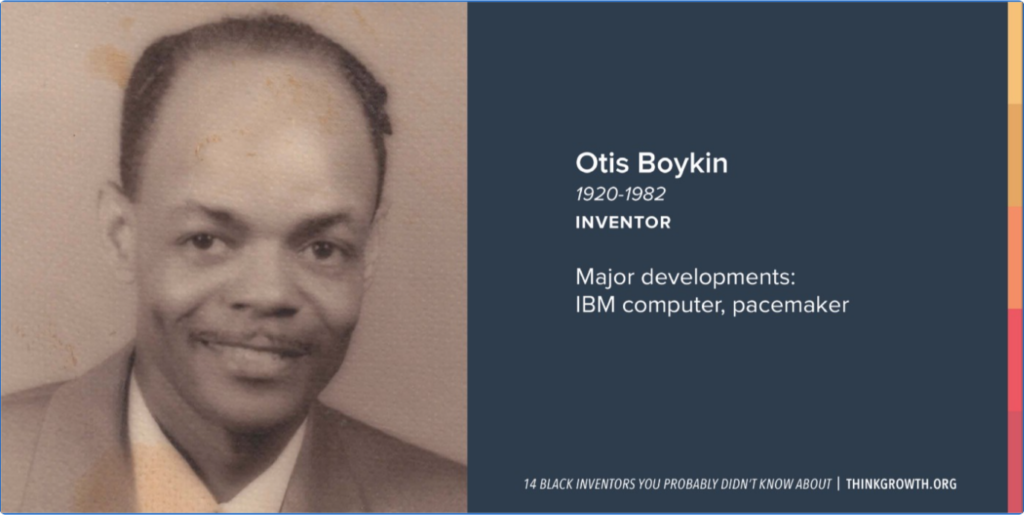
Otis Boykin’s most notable contribution to science was likely the circuit improvements he made to pacemakers after losing his mother to heart failure — a contribution that has saved countless lives since. But this single improvement was among a long list of achievements.
Boykin had 26 patents in his name and is famed for the development of IBM computers, burglar-proof cash register, chemical air filters, and an electronic resistor used in controlled missiles and other devices.
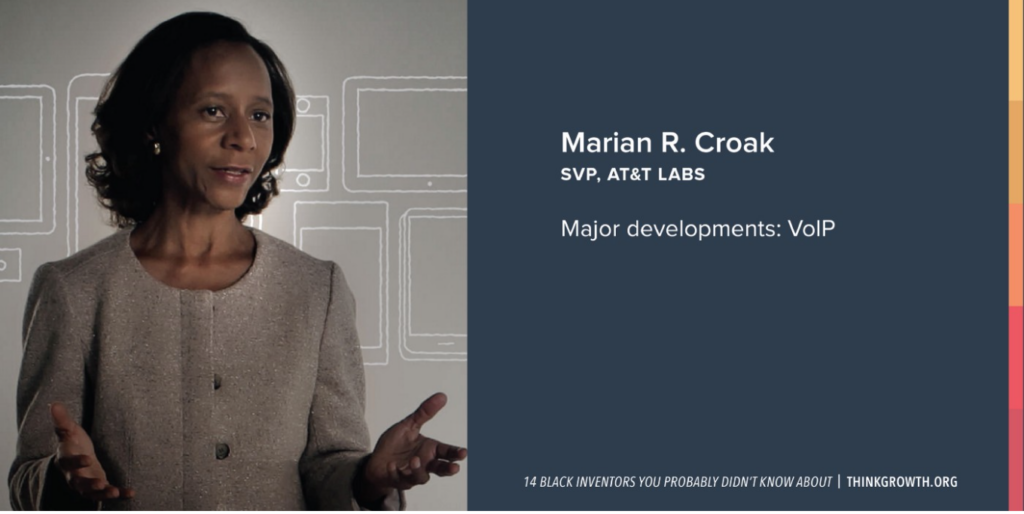
In 2013, Marian Croak was inducted into Women in Technology International’s hall of fame, a move that recognizes her remarkable achievements in tech. Croak holds over 135 patents, primarily in voice-over Internet protocol (VoIP), some in other areas. She has another 100 patents currently under review.
Today, Marian is an SVP at AT&T, serves as a mentor for women in AT&T labs, and sits on the board for the Holocaust, Genocide and Human Rights Education Center.

Due to cost, Philip Emeagwali was forced to drop out of school at age 14. But this didn’t stop him from becoming one of the greatest computer pioneers of our time. In fact, he’s often called “The Bill Gates of Africa.”
As an adult, Emeagwali began studying nature, specifically bees. The construction of the honeycombed inspired him to rethink computer processing. In 1989, he put this idea to work, using 65,000 processes to invent the world’s first massively parallel processing supercomputer — able to perform 3.1 billion calculations per second. That same year, Emeagwali received the Gordon Bell Prize for his application of the CM-2 massively-parallel computer.
Many of these inventions helped simplify our daily lives, enhancing the process, making our efforts more efficient and effective.
PHILIP GREENE – EMPOWER COFOUNDER
Content provided courtesy of History.com, Britannica.com and Wikipedia.com, Thinkgrowth.com, Blackpast.com, All Rights Reserved.


